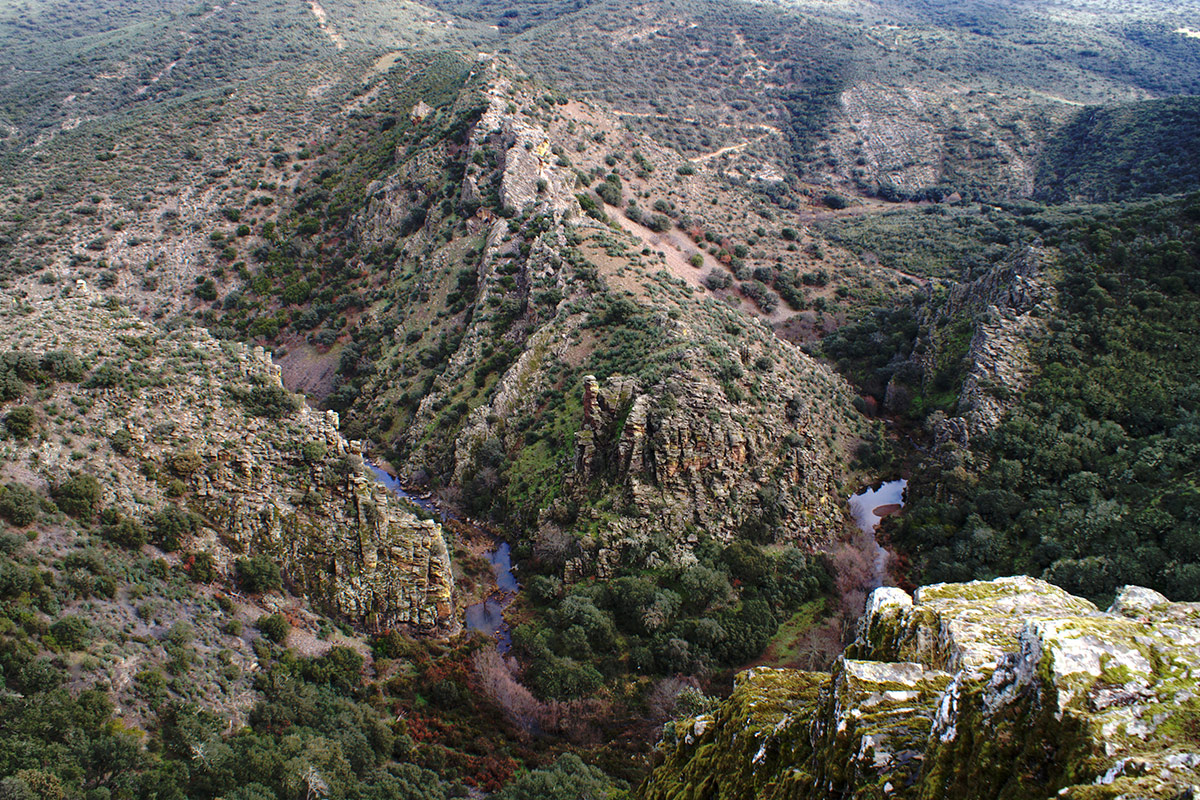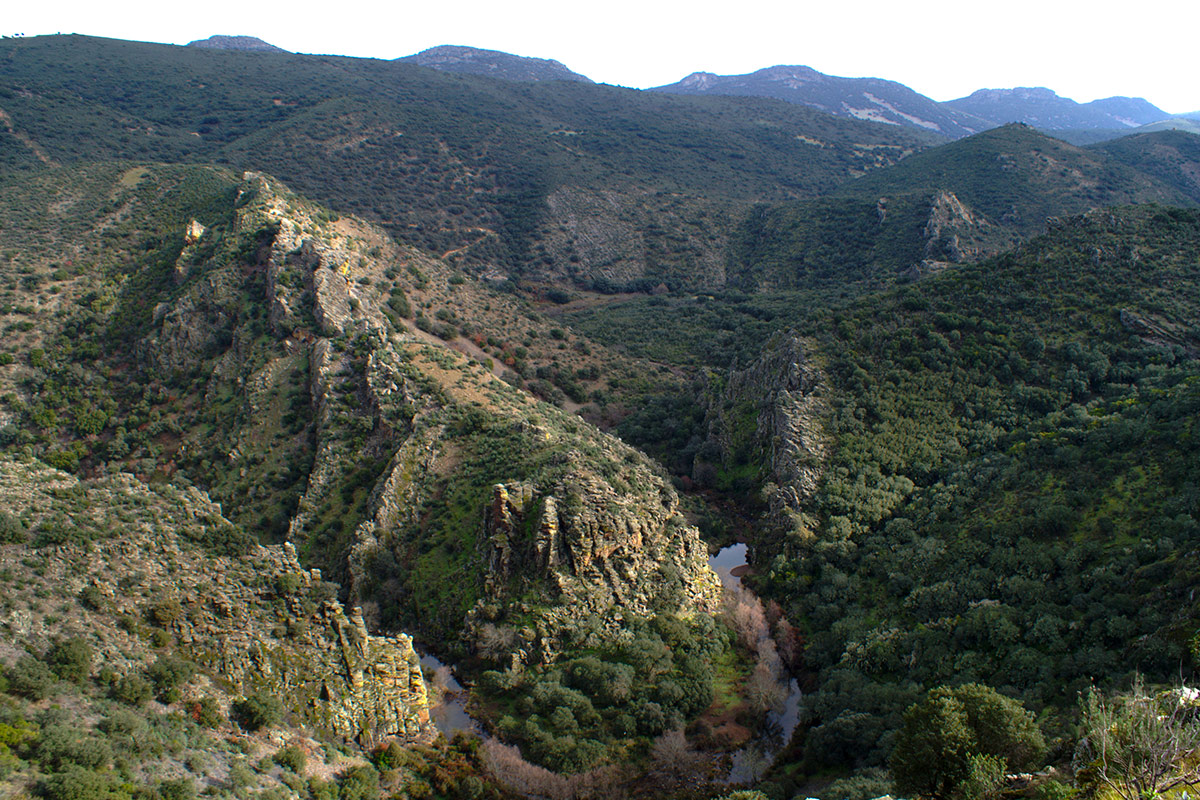The itinerary starts from Castañar de Ibor on the road to Navalmoral de la Mata; take a trail to the right at kilometre 36.8.
The route will take us to a spot popularly known as the Casitas de Papel, perhaps because of the abandoned houses of the goatherds built of chips of slate as thin as bundles of papers arranged to raise the walls. The surrounding area is formed of these Silurian slates which form the core of the Syncline of the Guadarranque.

Castañar de Ibor is located in the anticlinal valley of the Ibor on shales, feldspar sandstones, and to the north of the village limestone which gives rise to the karst formations of the Castañar Cave. All these rocks are very ancient and are from the Ediacaran period. On the section of the road Cambrian traces of sandstones and siltstones appear but we will not stop to examine them. Once on the trail we immediately come to the Ordovician in the Sierra del Castañar as we penetrate the synclinal valley of the Gualija-Guadarranque which we are not to leave on the whole of the itinerary.

On the route we will find information on surprising geological, agricultural, and ecological landscapes: the raña of La Laguna and its surroundings of magnificent olive groves, the riverside woodland of the Garganta del Endrinal (which is also a geosite as it explains the climatic change of the late Ordovician), and the Era de Porrinas where we will observe rocks of contact metamorphism owing to the influence of the magmatic intrusion which gave rise to the Berrocal de Peraleda. Our final prize is a landscape of undeniable beauty at the Casitas de Papel coaxed from the meanders with which the fractures of the hard rocky ground of orthoquartzite force the River Gualija to follow a tortuous course as it makes its way towards the Tajo. The Gualija never carries a large volume of water but the lack of reservoirs on its course, the ruggedness of the terrain, and the traditional occupancy of the land have preserved a landscape of high ecological value. On its banks and on those of its tributaries the riverside woodland is diverse with its alders and Portuguese laurels and the constant presence of laurustinus and junipers.
